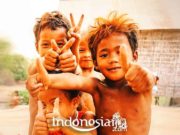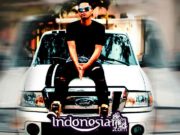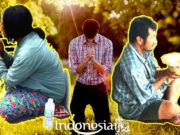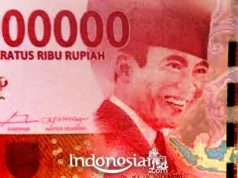East Kalimantan is a province of the Indonesian state, located on the eastern tip of Kalimantan Island bordering Malaysia, North Kalimantan, Central Kalimantan, South Kalimantan, West Kalimantan and Sulawesi.
The total area of East Kalimantan is 127,346.92 km² and a population of 3,575,449 people (2017). East Kalimantan is the region with the fourth lowest population density in the archipelago. The provincial capital is the city of Samarinda.
Before being split into North Kalimantan, East Kalimantan Province was the second largest province in Indonesia after Papua, with an area of 194,489 square kilometers which is almost the same as Java Island or about 6.8% of the total area of Indonesia.
Tribes in East Kalimantan
Ethnicity of East Kalimantan is dominated by Javanese ethnicity (30.24%) who spread in almost all regions, especially transmigration areas to urban areas.
The second largest ethnic group is Bugis (20.81%), who mostly occupy coastal and urban areas.
The third largest ethnic group is Banjar (12.45%) which is quite dominant in Samarinda and Balikpapan. East Kalimantan is the main destination for migrants from Java, Sulawesi and South Kalimantan.
In fourth place is the Dayak ethnic group (9.94%) who live in the interior. The ethnic Kutai (7.80%) who inhabit Kutai Kartanegara, East Kutai and West Kutai are in fifth place.
In the sixth to tenth order, namely the Toraja (2.21%), Paser (1.89%), Sundanese (1.57%), Madurese (1.32%) and Butonese (1.25%) as well as other tribes from various regions in Indonesia.
Local language
The language of instruction of the people of East Kalimantan generally uses Indonesian and Banjar languages. The distribution of the Banjar language to East Kalimantan is due to the large number of overseas Banjar people from South Kalimantan.
Javanese and Buginese speakers are also quite large in East Kalimantan due to the large number of immigrants from Java and Sulawesi who inhabit East Kalimantan.
There are several other languages spoken by the people of East Kalimantan. Among them, the Malay families such as the Kutai Kota Bangun, Kutai Tenggarong, Berau and Barito families such as the Paser, Benuaq, Bentian, Tunjung languages.
Then, there are North Borneo / Orang Ulu languages such as Bahau, Modang, Aoheng / Penihing, Seputan, and Basap Berau.
Folk songs
Like other cultures, East Kalimantan also has regional songs. Regional songs from East Kalimantan, including Hornbills, Meharit, Sabarai, Anjat Manik, Bebilin, Andang Sigurandang, Bedone, Ayen Sae, Sorangan, Indung-indung, Tingkilan (Kutai tribe), and Music Sempek / Kejien (Dayak Wehea tribe) .
Traditional weapon
In East Kalimantan, there are several types of traditional weapons such as mandau, gayang, keris buritkang, chopsticks, spears, shields. However, the most famous is the mandau.
Mandau is usually made by a blacksmith who has magic. Mandau is a kind of weapon in the form of a machete about 1 / 2m long.
There are two kinds of Mandau. First, the mandau is called Display and is used for war and ceremonies. Second, the mandau which is usually used for daily needs.
Traditional clothes
The culture of East Kalimantan cannot be separated from the traditional clothing of the region itself.
Both men and women wear headgear (hats) decorated with hornbill feathers, vest shirts and woven cloth at the knees.
For men, wearing a shield with distinctive ornaments on his hands, as well as a necklace made of animal bones and teeth.
While women are added with cloth (skirt) with distinctive colors and decorations, as well as necklaces and several bracelets on both hands.
Custom home
Rumah Lamin is a traditional house of East Kalimantan. The shape is a stage 2 meters high from the ground and is inhabited by 25-30 families.
The end of the roof of the house is decorated with a dragon’s head as a symbol of majesty, nobility and heroism. Meanwhile, in the courtyard of the house, there is a Blontang statue depicting a god as guardian of a house or village.
In this traditional house, there are several parts, namely the kitchen room, bedroom and living room. The ladder used to climb into the house is made of one tree.
Meanwhile, the walls of the house are made of wood and thatch leaves. At the bottom of the house (under) it is used to raise livestock.
Traditional musical instruments
There are also traditional East Kalimantan musical instruments, among others, kadire, klentengan (sluding), sampek, heart debt, and uding / uring.
Kedire
Kedire is played by being blown. The tone that comes out of the coconut shell will be adjusted to the rhythm of the music.
The mouth of this instrument is made of 5 to 6 month old pumpkins. The contents of the flask are then removed and soaked for 1 full month (30/31 days).
The pumpkins are then glued together with adhesive from the forest honeycomb.
Klentengan (sluding)
At first glance, this musical instrument is almost like a gamelan but Klentang itself has 6 small gongs that have different tones. This musical instrument is made of wood which is strong and light and a metal brass.
Sampek
Sampek is a traditional musical instrument of the Dayak tribe or the Kayaan community. Uniquely, sampek is made of several types of wood such as arrow wood, lime wood, and ironwood.
Sampek takes weeks to make. The number of strings is adjusted to the wishes of the maker. There are 3 strings, 4 strings, 6 strings, even more.
Debt Heart
This musical instrument consists of an elongated wood and is played by being hit using a wood with a hard lump on it.
Apart from entertainment, this musical instrument is also used to accompany traditional dances by the Dayak Kenyah tribe in Pampang Village, East Kalimantan.
Uding / Uring
Uding or uring has a diameter of 2 to 3 cm and a length of up to 20 cm. At the end, there is a cavity that contains wood seeds. How to play this instrument is enough to be hit.
Traditional Village
In East Kalimantan, there is a cultural village called Desa Lekaq Kidau. To this day, this traditional village of East Kalimantan is still alive with the culture of their ancestors.
Every time the harvest season arrives, the village community celebrates by performing pig slaughter and a typical Dayak dance performance.
Then, proceed with the activity of pounding rice into flour using a tool similar to a mortar. The results of the collision of rice are put in medium-sized bamboo and burned with hot coals.
The inhabitants of this village also still hold on to the long lobe ear culture. Ear lobe lengthening is done since he was a baby. Come on, get other interesting information from Indonesiar.com and please share articles from us with everyone.





























